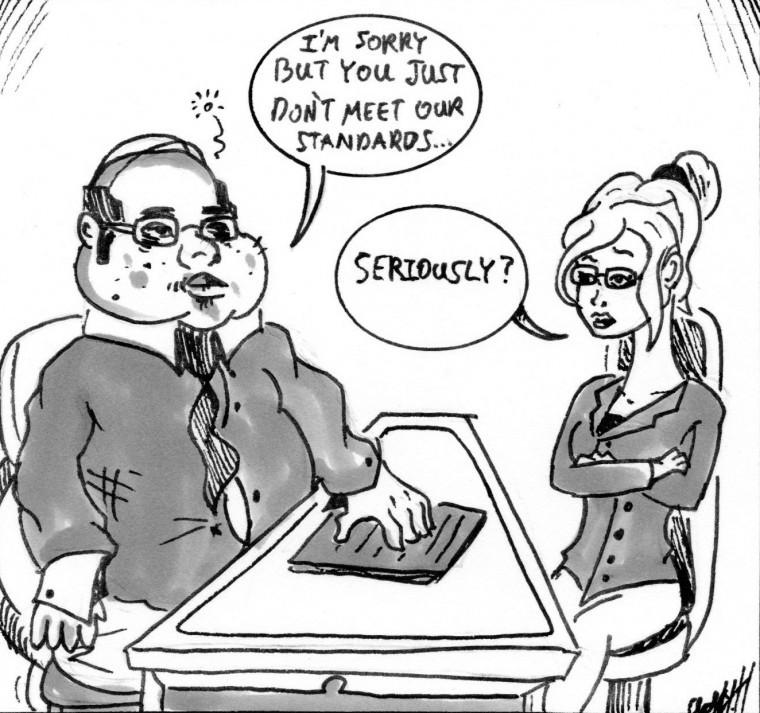Women still face a double standard in the media
January 23, 2011
Women step onto a scale at a young age. Not to weigh themselves, but to balance themselves.
This is especially true for women in professional settings. A woman must be a loving, nurturing spouse and mother and then step into the workplace and somehow manage to be respected as an assertive, confident woman without being considered a bitch.
Unfortunately, women are constantly trying to reconcile themselves with how they are viewed by men, rather than how they view themselves.
Perhaps the biggest influence on this issue of self-perception is the portrayal of women in television and film, where the way they are being depicted is usually decided by the male directors.
“Women directors are not players in the studio ‘boy’s club’ which still dominates when it is time to find or hire a director,” explains Laura Vazquez, associate professor of communications and director of NIU’s student film festival. “[A recent New York Times article] notes that a female director who makes a film that flops at the box office may not get another opportunity for some time, whereas men are forgiven much more readily.”
The article further explains that Katheryn Bigelow, who directed The Hurt Locker and was the first female to win an Academy Award for directing, also directed K-19: The Widowmaker in 2002. This movie was not a success at the box office, and she did not get another chance to direct a feature until The Hurt Locker in 2008.
Michael Mann, however, flopped in 2001 with Ali, but his next chance to direct came just three years later with Collateral.
According to an annual study called “The Celluloid Ceiling,” women only directed 7 percent of the top 250 grossing films in 2009. Unfortunately, this imbalance is not limited to the roles behind the scenes.
“Males appear in a greater number and range of roles and have a fuller range of acceptable body types from William H. Macy to Nicolas Cage to Bruce Willis to Tom Cruise,” said Gretchen Bisplinghoff, associate professor of media studies and undergraduate director for the department of communication. “Images of women still conform to cultural standards of ideal beauty; mothers, daughters, wives and hard-living prostitutes consistently are all played by conventionally beautiful actresses such as Natalie Portman, Nicole Kidman and Angelina Jolie.”
Male actors do not have to live up to the same standards of conventional beauty as female actors.
Even on television, the double standard between males and females exists. Several sitcom couples have the funny, fat guy married to a wife who appears to be a retired model. You never see the opposite.
On Saturday Night Live, there are 10 male cast members and four female cast members this season. The show has always had a Chris Farley-type cast member who is a big, goofy, lovable guy. There has never been a female equivalent.
Whenever SNL mocks a bigger female, it is usually an overweight male in a wig or a woman in a fat suit. How come we laugh when we see an overweight man dancing around in a Chippendale’s suit, but when we see an overweight woman, we just think about how unhealthy her body is?
“Since men are the media makers, primarily, they tend to choose subjects that please male audiences,” Vazquez said.
Women need to break into the studio “boy’s club” and tip the scales in their favor, while studio executives need to start betting on the talents of women. Nicolas Cage and Michael Bay can’t keeping making these cinematic gems forever.



